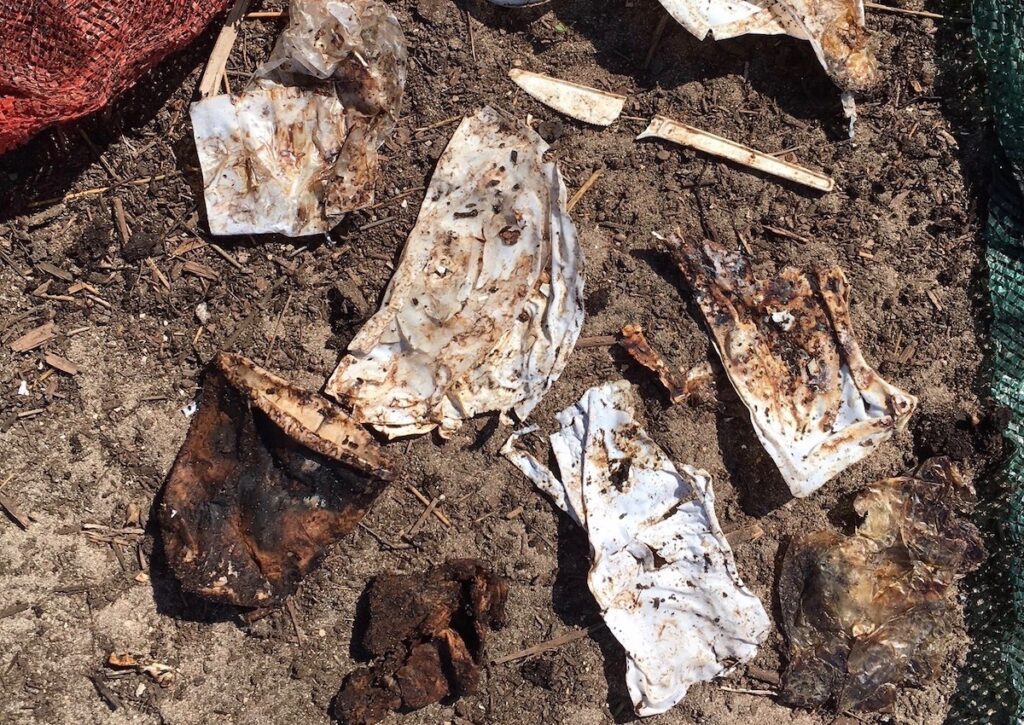We ran Composting Trials of our Products. What Happened?

We recently rolled up our sleeves and ran composting trials of GREEN HOME products at Zero to Landfill Organics (ZTL) in Cape Town. In some ways the trials were predictable (spoiler alert: all our products are compostable) – but there were a few surprises.
ZTL is an industrial, or large-scale, composting facility run by Melanie Ludwig. When we visited the site, Melanie’s standard greeting was: “Welcome to the farm!”. And yes, it’s similar to a farm. But instead of rows of vegetables (those are growing on the plot next door), at ZTL you’ll find giant windrows of compost.
These large compost piles amplify nature’s biodegradation process. Bigger piles mean more of the good stuff – more microbes (bacteria and fungi) – which generate more heat. Temperatures of 60 – 70°C are typical in active large-scale compost piles. This helps to compost green waste rapidly while effectively killing off pathogens. The result? Nutrient rich compost that’s free of any bad stuff.


Top image: Products at start of trial. Bottom image: Partially composted packaging. The previously clear PLA containers have become white, opaque and flaky, while the paper and bagasse products are wet and soft.
So what happened when we put GREEN HOME products in these compost piles?
We noticed that different products composted at different rates in different composting conditions.
Our bagasse products and wood pulp product liked things juicy and composted much faster when mixed with plenty of food waste, or anything full of moisture.
We assumed our corn starch based bioplastic products would prefer plenty of moisture too. But, they composted fastest in a fairly dry compost pile which had built up good heat and contained lots of healthy white fungus.
After just 4 weeks in these dry and warm conditions, our corn starch bioplastic products samples – which included sandwich wedges, cold cups, coffee cup lids and more – had completely biodegraded. All that remained were some pieces of cutlery (see pic below) which were our thickest sample item by far. At this stage, the pieces of cutlery had become much softer, and were malleable pressed. One of our team actually squealed when she felt a piece of the cutlery. It had gone from feeling hard and plastic-like to softer, more like unfired porcelain.
The bioplastic layer on one of our hot cups had also disappeared, but the paper cup itself remained, due to the pile being too dry for the paper to break down quickly.

Pieces of partially composted CPLA cutlery. At this stage they are no longer hard, but breakable and soft to the touch, similar in texture to unfired porcelain.
Chemistry Matters
Even though our two kinds of clear bioplastic bags look exactly the same, the wood cellulose and corn starch bags composted differently too – because they’re made from different materials and are different at the molecular level. The wood cellulose bags broke down faster in moist conditions, while the corn starch bags composted faster at higher temperatures.
Composting conditions will always affect rates of biodegradation – it’s chemistry after all! But the essential elements remain the same. Microbes, moisture and oxygen together break down organic matter over time.
We found it fascinating to watch how our products broke down and plan to run more composting trials soon. We’ll be sure to let you know how they go.
Do you compost at home? Let us know if you have any stories to share. And check out our compost solution providers page for a list of people offering equipment, training and composting services.
